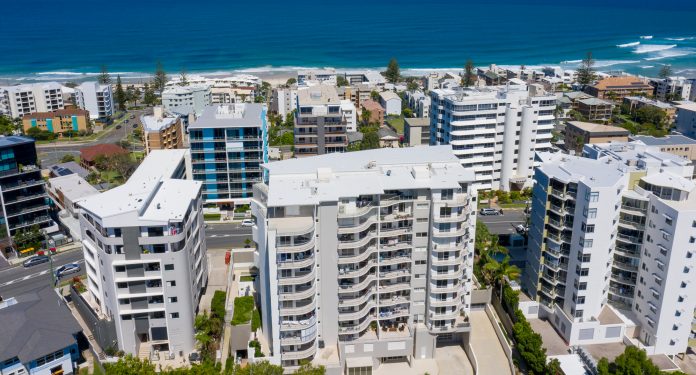Forcing developers to supply affordable housing to ease the crisis on the Sunshine Coast would amount to imposing a new tax on buyers, a housing industry group has warned.
The Sunshine Coast Council and homelessness stakeholders will explore how to make the provision of social and affordable housing a condition of development under the planning scheme.
But the Housing Industry Association (HIA) warned the extra cost of providing discounted homes for some would end up being passed on to other homebuyers.
HIA Queensland executive director Mike Roberts said developers could not be expected to provide affordable housing “out of the goodness of their hearts” because they were not charities.
“I get quite exasperated because every time a local government is embarking on a mission to solve housing issues, this idea that developers should somehow subsidise or pay for that development of more affordable housing pops up,” Mr Roberts told sunshinecoastnews.com.au
“People in government think developers will dip into their pocket. They won’t. They will spread that cost over the remaining part of the project.
“They will reduce the price on one part of the project (to supply the affordable housing) and increase the price on the other part of the project.
“So how does that solve the problem?”
Do you have an opinion to share? Submit a Letter to the Editor with your name and suburb at Sunshine Coast News via: news@sunshinecoastnews.com.au
Mr Roberts said a policy such as has been suggested would amount to a tax on new housing.
“It needs to be called for what it is — it’s a tax, it’s an affordable housing tax. It’s an oxymoron, making others pay so others have affordable housing.
“If you reduce a cost of a unit by, say, 20 per cent, that 20 per cent gets distributed across the other units, so the people who are buying that are paying for it. So it’s a tax.”
The council met with charities and agencies last month for the first homelessness roundtable of the year to find ways of housing more people amid a housing crisis on the Coast.
- Related story: Council venues, sleeping pods on buses could be used to shelter the homeless
- Related story: Calls for emergency camps on the Coast to shelter rental refugees
Frontline agencies have been inundated with requests for help as a massive shortage of rentals has forced people to sleep in tents, sheds, cars and to couch surf.
There are reports now of more than 200 people competing for a single rental property and rentals being leased to the highest bidder, with some tenants forking over a year’s rent in cash to secure the win.
People with jobs who had never imagined they would be homeless have been turfed out of rentals as landlords take advantage of the hot property market and sell.
The roundtable resolved to explore accommodation solutions like sleeping pods on buses and using council venues for crisis shelter as well as how to force developers to build affordable homes and encourage private investment in crisis accommodation.
Join an independent local news revolution by subscribing to receive our FREE daily news feed: Go to SUBSCRIBE at top of this article to register
However, Mr Roberts said the key to housing affordability was allowing more diversity in the type of home construction, thereby giving buyers more choice.
He suggested one easy fix would be amending the state planning act to promote more infill development – which includes knocking down old houses to put up higher density buildings, building backyard granny flats and encouraging more duplexes and townhouses.
“The planning scheme currently makes it difficult to deliver anything other than a house on a block and highrise apartments, but there is a whole range of housing typology that sits in between,” Mr Roberts said.
“There are secondary dwellings (granny flats), duplexes, triplexes, quadplexes that the planning scheme makes difficult and unattractive for the industry to deliver.”
- Related story: Sunshine Coast votes overwhelmingly to draw up new town plan
Mr Roberts said housing diversity was so limited on the Coast that new home buyers had a choice between Aura or Harmony because “there’s not a lot else going on other than luxury apartments on the beach”.
“Can you imagine the difference it would make if – throw a number out there – 20 per cent of houses on the Sunshine Coast put up a secondary dwelling (granny flat) in the backyard; it would be enormous,” Mr Roberts said.
- Related story: Granny flats may hold key to Coast’s housing crisis
- Related story: Land shortage leaves ‘no option’ but to build up
Mr Roberts said changing the planning scheme legislation was the role of the State Government but he said the council should be pushing that agenda.
However, he said councils were often reactive to criticism to other housing types from what he said was the vocal minority.
“What I get frustrated about is people that are listened to and have the most say are the people that have somewhere to live and have a home,” he said.
“They’re the ones dictating the choice of the other ones who are desperate to get into a home. What they are saying is ‘We don’t want you in our suburb, go live somewhere else.”





